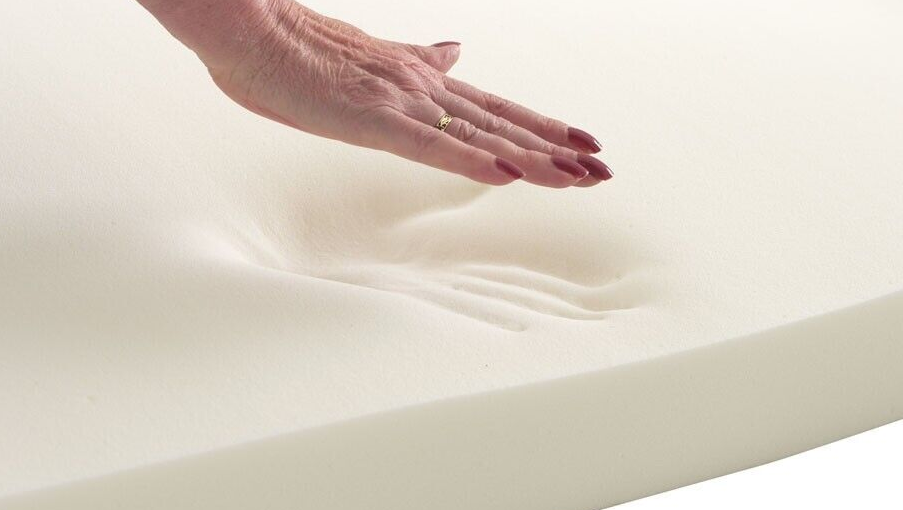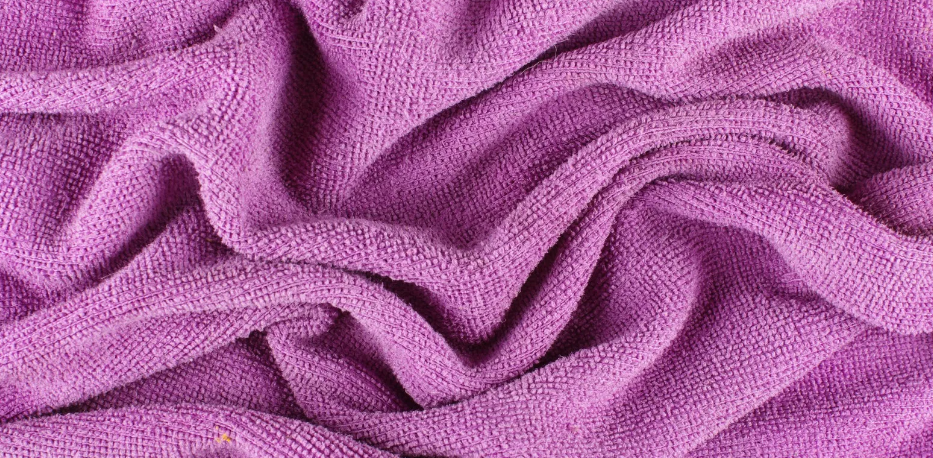Best Filling For Sofa Back Cushions
The best filling for sofa back cushions is a combination of high-density foam and polyester fiberfill. This combination provides the perfect balance of support and comfort. The high-density foam offers firmness and durability, ensuring that the cushions maintain their shape over time. The polyester fiberfill adds a plush and soft feel, making the cushions cozy and inviting. Together, these materials create a filling that is both supportive and comfortable, making it the ideal choice for sofa back cushions.
- Feather and down: This filling provides a luxurious and soft feel, offering excellent comfort and support.
- Polyester fiberfill: This synthetic filling is affordable, lightweight, and hypoallergenic, making it a popular choice for sofa back cushions.
- Memory foam: Known for its ability to contour to the body’s shape, memory foam provides excellent support and pressure relief.
- High-density foam: This type of foam is durable and offers firm support, making it ideal for those who prefer a more structured cushion.
- Microfiber: Microfiber filling is soft, plush, and resistant to stains, making it a practical choice for sofa back cushions.
Feather and down
Feather and down are two natural materials commonly used in bedding and clothing. Feathers are the outer covering of birds, while down is the soft, fluffy undercoating found beneath the feathers. Both materials are known for their insulating properties, making them ideal for keeping warm in cold weather. Feather and down products are often used in pillows, comforters, and jackets, providing a lightweight and cozy feel. These materials are also breathable and have the ability to wick away moisture, making them a popular choice for bedding and outdoor gear. Additionally, feather and down are renewable and biodegradable, making them an environmentally friendly option for those looking for sustainable products.
Pros
– Feather and down provide excellent insulation, keeping you warm and cozy during cold weather. – The natural materials used in feather and down products are breathable, allowing for better airflow and preventing overheating. – Feather and down pillows and comforters are known for their softness and ability to conform to your body, providing optimal comfort and support. – These materials are durable and long-lasting, ensuring that your feather and down products will stand the test of time.
Cons
- Feathers and down can cause allergies in some people.
- Feathers and down can be difficult to clean and maintain.

Polyester fiberfill
Polyester fiberfill is a synthetic material commonly used as stuffing or filling in various products such as pillows, cushions, and stuffed toys. It is made from polyester fibers that are processed and spun into a fluffy, lightweight material. Polyester fiberfill offers several advantages over natural fillings like cotton or feathers. Firstly, it is hypoallergenic, making it suitable for individuals with allergies or sensitivities. Additionally, it is highly resilient and maintains its shape well, providing long-lasting support and comfort. Polyester fiberfill is also easy to care for, as it can be machine washed and dried without losing its loft or softness. Moreover, it is an affordable option compared to other fillings, making it a popular choice for manufacturers and consumers alike. Overall, polyester fiberfill is a versatile and practical material that offers comfort, durability, and value.
Pros
- Polyester fiberfill is hypoallergenic, making it a great option for those with allergies or sensitivities.
- It is easy to clean and maintain, as it can be machine washed and dried without losing its shape or loft.
- Polyester fiberfill is lightweight, making it ideal for travel or for those who prefer a less bulky bedding option.
- It is affordable and widely available, making it a budget-friendly choice for those looking for quality bedding.
Cons
- Polyester fiberfill is not biodegradable, which means it can take hundreds of years to decompose in landfills, contributing to environmental pollution.
- Polyester fiberfill is not as breathable as natural fibers like cotton or wool, which can make it uncomfortable to wear or sleep on for extended periods of time.

Memory foam
Memory foam is a type of polyurethane foam that is known for its ability to contour to the shape of the body. It was originally developed by NASA in the 1960s to improve the safety of aircraft cushions. Memory foam is made from a viscoelastic material that responds to heat and pressure, allowing it to mold to the body’s curves and provide support where it is needed most. This unique characteristic of memory foam makes it an ideal material for mattresses, pillows, and other bedding products. It helps to relieve pressure points, reduce motion transfer, and promote proper spinal alignment, resulting in a more comfortable and restful sleep. Additionally, memory foam is hypoallergenic and resistant to dust mites, making it a popular choice for individuals with allergies or asthma. Overall, memory foam is a versatile and innovative material that has revolutionized the sleep industry by providing unparalleled comfort and support.
Pros
- Memory foam molds to your body, providing personalized support and comfort.
- It helps to relieve pressure points, reducing pain and discomfort during sleep.
- Memory foam is durable and long-lasting, maintaining its shape and support over time.
- It is hypoallergenic and resistant to dust mites, making it a great option for those with allergies.
Cons
- Memory foam mattresses can retain heat, causing discomfort and excessive sweating during sleep.
- Memory foam mattresses can have a strong chemical odor, especially when they are new, which can be unpleasant for some individuals.

High-density foam
High-density foam is a type of foam that is known for its durability and support. It is made by combining chemicals and then subjecting them to heat and pressure, resulting in a material that is dense and firm. This type of foam is commonly used in various applications, including mattresses, furniture cushions, and automotive seating. High-density foam is preferred for these purposes because it offers excellent support and comfort, ensuring a comfortable and restful sleep or seating experience. Additionally, its density allows it to retain its shape and provide long-lasting durability, making it a cost-effective choice for many consumers. Overall, high-density foam is a versatile and reliable material that is widely used in various industries for its exceptional qualities.
Pros
- High-density foam provides excellent support, helping to relieve pressure points and reduce pain and discomfort.
- It is durable and long-lasting, maintaining its shape and support over time.
- High-density foam is hypoallergenic and resistant to dust mites, making it a great option for those with allergies.
- It is versatile and can be used in a variety of applications, such as mattresses, cushions, and upholstery.
Cons
- High-density foam can be quite expensive compared to other types of foam. This can make it less accessible for individuals on a tight budget.
- Due to its high density, this type of foam can be quite firm and may not provide the desired level of softness or cushioning for some individuals.

Microfiber
Microfiber is a synthetic material that is made up of extremely fine fibers, typically smaller than a human hair. These fibers are tightly woven together to create a fabric that is incredibly soft and durable. Microfiber is known for its ability to absorb and hold onto moisture, making it a popular choice for cleaning and drying purposes. It is also highly effective at trapping and removing dirt, dust, and other particles, making it an excellent choice for cleaning surfaces such as glass, stainless steel, and electronics. Additionally, microfiber is hypoallergenic and resistant to bacteria, making it a great option for those with allergies or sensitivities. Overall, microfiber is a versatile and practical material that is widely used in various industries, including cleaning, automotive, and clothing.
Pros
- Microfiber is highly absorbent, making it great for cleaning up spills and messes.
- It is extremely soft and smooth, providing a luxurious feel and comfort.
- Microfiber is resistant to stains and wrinkles, making it easy to maintain and keep looking new.
- It is lightweight and breathable, allowing for better airflow and preventing overheating.
Cons
- Microfiber can be difficult to clean and may require special care instructions
- Microfiber may not be as durable as other materials and can be prone to pilling or snagging

FAQs
What are the benefits of using high-density foam as a filling for sofa cushions?
This response was truncated by the cut-off limit (max tokens). Open the sidebar, Increase the parameter in the settings and then regenerate. ————————- There are several benefits of using high-density foam as a filling for sofa cushions: 1. Comfort: High-density foam provides excellent support and cushioning, making it comfortable to sit or lie on for extended periods. 2. Durability: The dense structure of high-density foam makes it highly resilient and resistant to sagging or deforming over time. This ensures that the sofa cushions maintain their shape and support for a longer duration. 3. Longevity: Due to its durability, high-density foam filling can last for many years without losing its supportive properties. This reduces the need for frequent cushion replacements, saving both time and money. 4. Support: High-density foam offers superior support to the body, helping to alleviate pressure points and promote proper spinal alignment. This can be particularly beneficial for individuals with back or joint issues. 5. Allergy-friendly: High-density foam is hypoallergenic and resistant to dust mites, mold, and mildew. This makes it a suitable choice for individuals with allergies or respiratory sensitivities. 6. Easy maintenance: High-density foam cushions are relatively easy to maintain. They are resistant to stains and can be spot cleaned with mild soap and water, making them convenient for everyday use. 7. Versatility: High-density foam can be cut and shaped to fit various sofa designs and sizes, allowing for customization and versatility in furniture manufacturing. Overall, high-density foam filling offers a combination of comfort, durability, support, and easy maintenance, making it an excellent choice for sofa cushions. HTML tags:
- Comfort: High-density foam provides excellent support and cushioning, making it comfortable to sit or lie on for extended periods.
- Durability: The dense structure of high-density foam makes it highly resilient and resistant to sagging or deforming over time. This ensures that the sofa cushions maintain their shape and support for a longer duration.
- Longevity: Due to its durability, high-density foam filling can last for many years without losing its supportive properties. This reduces the need for frequent cushion replacements, saving both time and money.
- Support: High-density foam offers superior support to the body, helping to alleviate pressure points and promote proper spinal alignment. This can be particularly beneficial for individuals with back or joint issues.
- Allergy-friendly: High-density foam is hypoallergenic and resistant to dust mites, mold, and mildew. This
What are the benefits of using feather and down as a filling for bedding and clothing?
There are several benefits of using feather and down as a filling for bedding and clothing: 1. Comfort: Feather and down provide exceptional softness and comfort, making them ideal for bedding and clothing. The natural fibers create a cozy and luxurious feel. 2. Insulation: Feather and down have excellent insulation properties, which help to regulate body temperature. They provide warmth during colder months and keep you cool in warmer weather. 3. Lightweight: Feather and down are lightweight materials, making them easy to move and wear. They do not add unnecessary bulk or weight to bedding or clothing. 4. Durability: Feather and down are known for their durability. With proper care, they can last for many years without losing their loft or shape. 5. Breathability: Feather and down allow air to circulate, promoting breathability. This helps to prevent overheating and excessive sweating, ensuring a comfortable sleep or wear. 6. Hypoallergenic: Contrary to popular belief, feather and down can be hypoallergenic. Proper cleaning and processing remove allergens, making them suitable for individuals with allergies or sensitivities. 7. Sustainable and Eco-friendly: Feather and down are natural and renewable resources. They are biodegradable and have a lower environmental impact compared to synthetic fillings. Overall, feather and down provide a luxurious, comfortable, and sustainable option for bedding and clothing.
What are the advantages and disadvantages of using high-density foam in furniture manufacturing?
- Advantages:
- High-density foam provides excellent support and comfort for users.
- It is durable and long-lasting, making it a good investment for furniture manufacturers.
- High-density foam retains its shape and resists sagging over time.
- It is lightweight and easy to work with during the manufacturing process.
- High-density foam can be molded into various shapes and sizes, allowing for versatile design options.
- Disadvantages:
- High-density foam can be more expensive than other types of foam, increasing the cost of furniture production.
- It may not be as soft or plush as lower density foams, which could be a drawback for some consumers.
- High-density foam may not be as breathable as other materials, potentially leading to discomfort for some users.
- It can be more difficult to clean and maintain compared to other upholstery materials.
- High-density foam may not be suitable for all types of furniture designs, limiting its versatility in some cases.
What are the advantages and disadvantages of using polyester fiberfill as a stuffing material in pillows and cushions?
- Advantages:
- Polyester fiberfill is lightweight, making it easy to handle and transport.
- It is hypoallergenic, making it suitable for individuals with allergies or sensitivities.
- Polyester fiberfill is resistant to mildew and mold, ensuring the longevity of the pillows and cushions.
- It is relatively inexpensive compared to other stuffing materials.
- Polyester fiberfill is machine washable and dries quickly, making it easy to clean and maintain.
- Disadvantages:
- Over time, polyester fiberfill may flatten or clump, reducing the overall comfort and support of the pillows and cushions.
- It may not provide the same level of breathability as natural stuffing materials, potentially causing discomfort for some individuals.
- Polyester fiberfill is not as environmentally friendly as natural stuffing materials, as it is derived from petroleum-based products.
- It may have a synthetic feel and lack the luxuriousness of natural stuffing materials like down or feathers.
- Polyester fiberfill may not be as durable as other stuffing materials, leading to a shorter lifespan for the pillows and cushions.
How does memory foam retain its shape and provide support for the body?
Memory foam retains its shape and provides support for the body due to its unique composition and properties. The main reason behind memory foam’s ability to retain its shape is its viscoelastic nature. When pressure is applied to memory foam, it responds by deforming and molding to the shape of the body. Once the pressure is removed, memory foam slowly returns to its original shape. This is because memory foam has a slow recovery time, allowing it to gradually regain its shape and provide consistent support. To provide support for the body, memory foam distributes weight evenly across its surface. This helps to alleviate pressure points and reduce the strain on specific areas of the body. The foam’s ability to contour to the body’s shape also helps in maintaining proper spinal alignment, which further enhances support and comfort. In HTML tags, the answer would be:
Memory foam retains its shape and provides support for the body due to its unique composition and properties.
The main reason behind memory foam’s ability to retain its shape is its viscoelastic nature. When pressure is applied to memory foam, it responds by deforming and molding to the shape of the body. Once the pressure is removed, memory foam slowly returns to its original shape. This is because memory foam has a slow recovery time, allowing it to gradually regain its shape and provide consistent support.
To provide support for the body, memory foam distributes weight evenly across its surface. This helps to alleviate pressure points and reduce the strain on specific areas of the body. The foam’s ability to contour to the body’s shape also helps in maintaining proper spinal alignment, which further enhances support and comfort.
What are the advantages of using microfiber cleaning cloths compared to traditional cleaning materials?
There are several advantages of using microfiber cleaning cloths compared to traditional cleaning materials: 1. Efficiency: Microfiber cloths are highly effective in capturing and trapping dirt, dust, and bacteria due to their fine fibers and unique structure. 2. Versatility: These cloths can be used for various cleaning tasks, including dusting, wiping surfaces, polishing, and even cleaning glass without streaks. 3. Durability: Microfiber cloths are long-lasting and can withstand multiple washes without losing their effectiveness or shape. 4. Environmentally friendly: Using microfiber cloths reduces the need for disposable cleaning materials, such as paper towels, which helps in reducing waste and promoting sustainability. 5. Cost-effective: Although microfiber cloths may have a higher upfront cost, they are a cost-effective option in the long run due to their durability and reusability. 6. Non-abrasive: Microfiber cloths are gentle on surfaces and do not scratch or damage delicate materials like traditional cleaning materials might. 7. Absorbency: These cloths have excellent absorbency, allowing them to hold a significant amount of liquid or cleaning solution, making them ideal for spills or wet cleaning tasks. 8. Hypoallergenic: Microfiber cloths are hypoallergenic and do not contain any chemicals or irritants, making them safe for use by individuals with allergies or sensitivities. 9. Time-saving: Due to their efficiency and effectiveness, microfiber cloths can help save time and effort during cleaning tasks. 10. Improved cleaning results: The fine fibers of microfiber cloths enable them to pick up smaller particles and remove more dirt and grime compared to traditional cleaning materials. Please note that the above information is provided in plain text format.






